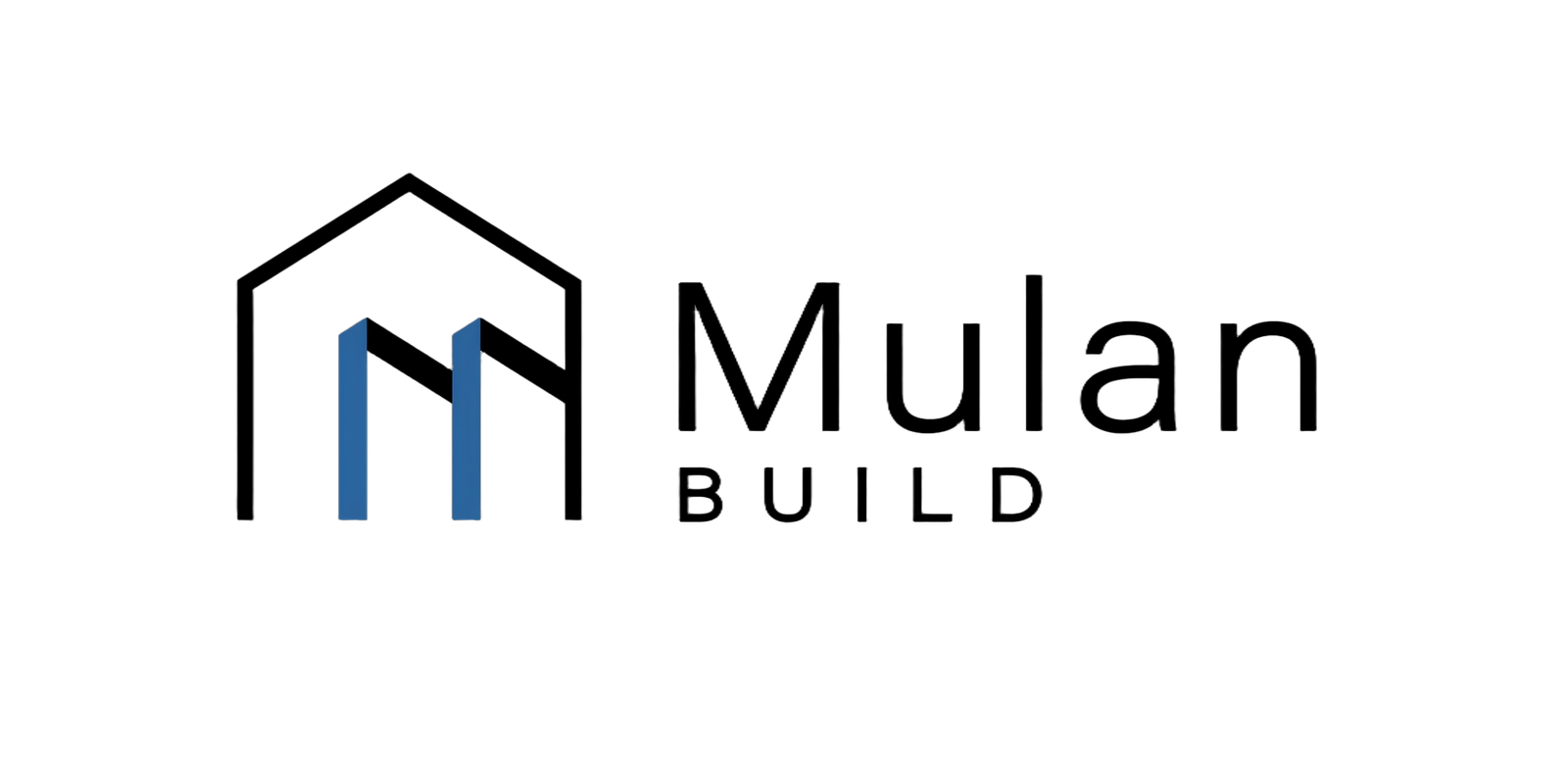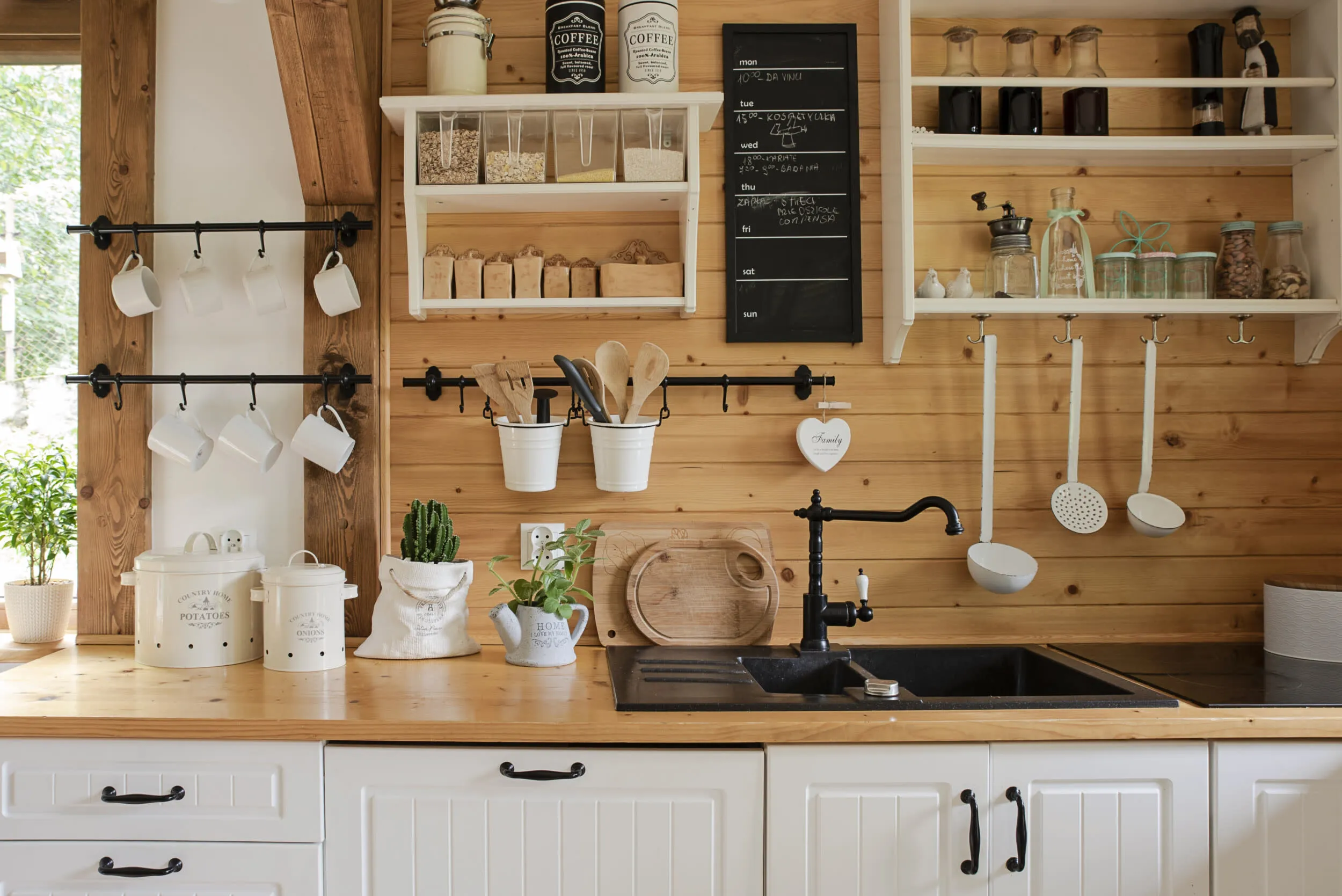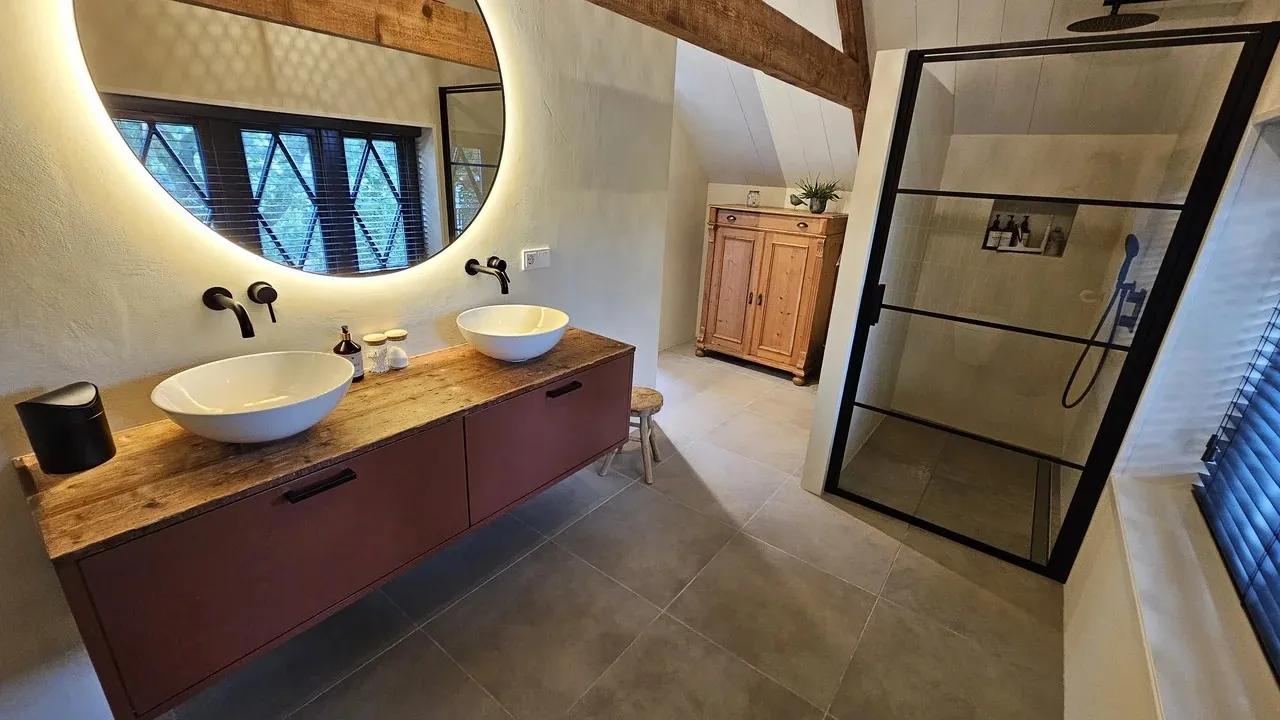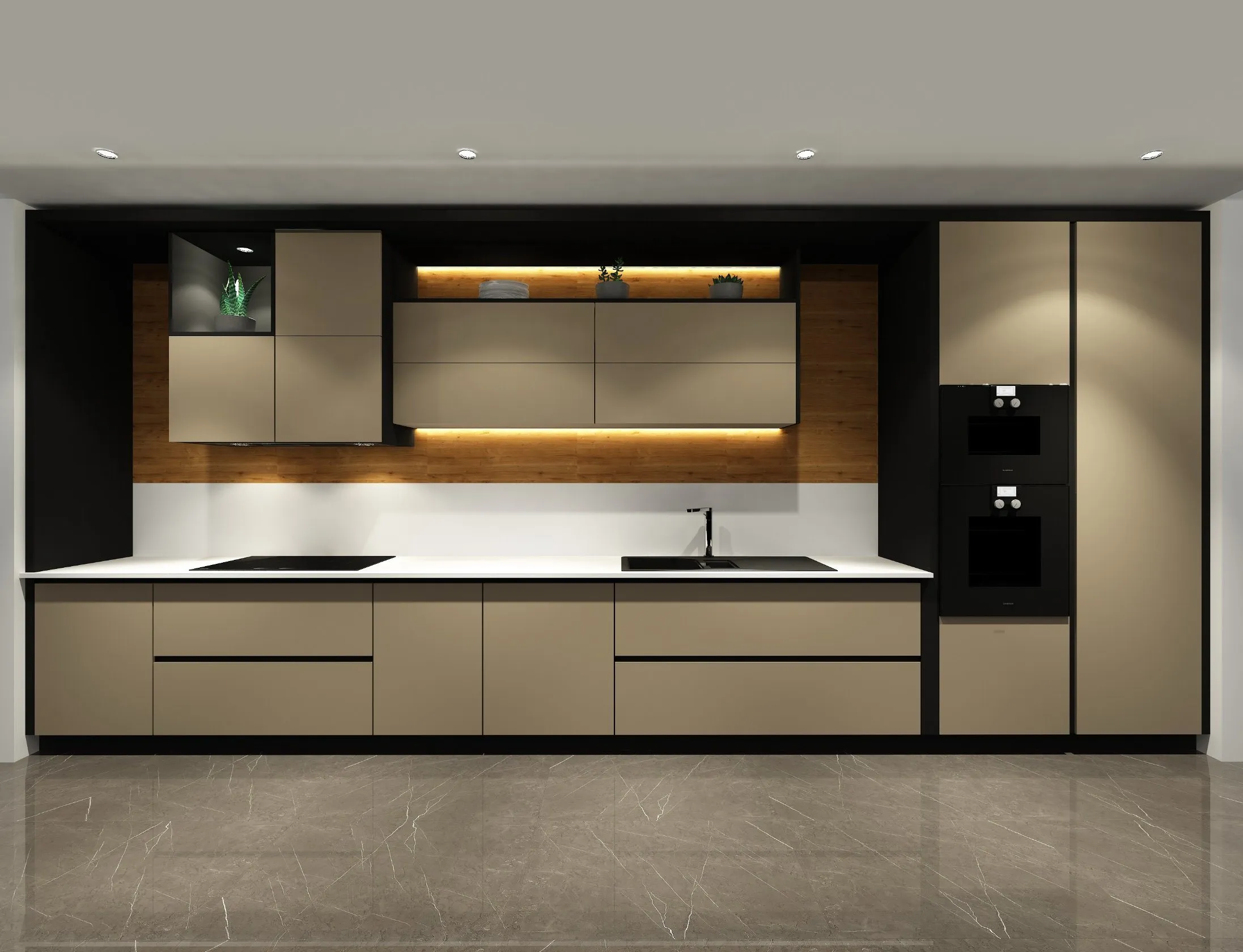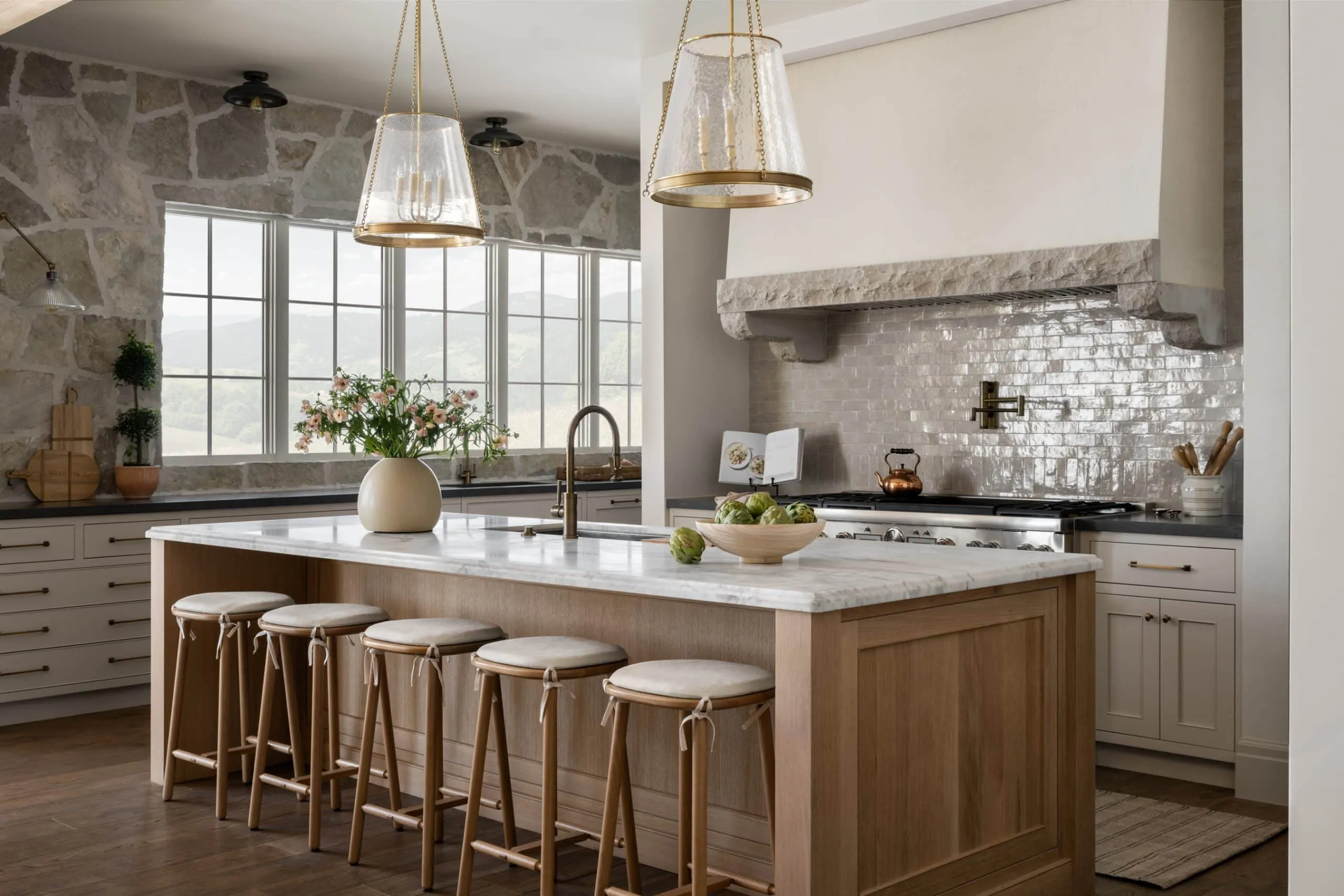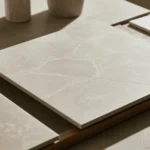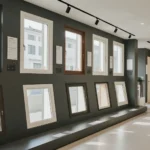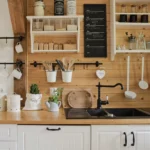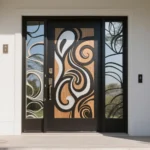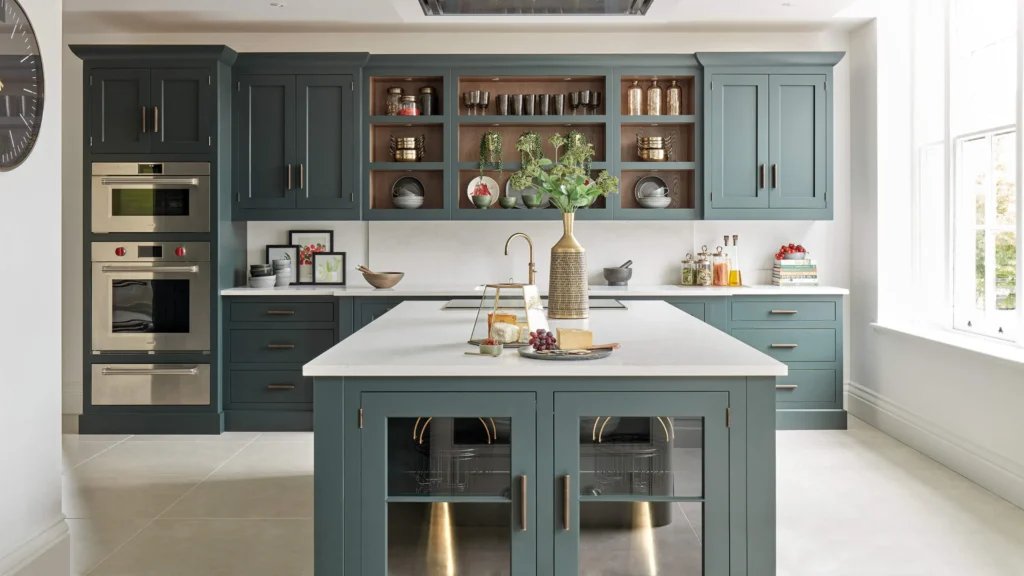
You want cabinets that last. But options feel noisy. This guide cuts the guesswork so you can choose fast, save money, and avoid mistakes.
We work as a one-stop building-materials partner based in Foshan, serving overseas projects. We support kitchens, wardrobes, bathrooms, doors, windows, tiles, lights, flooring, and wall panels. We help homeowners, remodelers, designers, developers, and builders. We also provide interior and facade 3D design, full-style matching, export logistics, and after-sales support. The tone is calm and practical. No pressure. Tell us what you need, and we plan the rest.
Most kitchens use cabinet-grade plywood, MDF, particle board, laminate/melamine, or mixed builds. Plywood is strong and holds fasteners well. MDF is smooth for paint. Particle board fits tight budgets. Laminates and melamine add tough surfaces. Choose by use, climate, and finish goals.
Some readers want a quick map. Others want proof. You will get both. We start broad, then go deep with simple rules, tables, and examples you can actually use.
What are the main kitchen cabinet materials?
Good cabinets start with the right substrate and surface. Most homes use plywood, MDF, particle board, or a mix. Laminates, melamine, and veneers finish the look and add wear resistance.
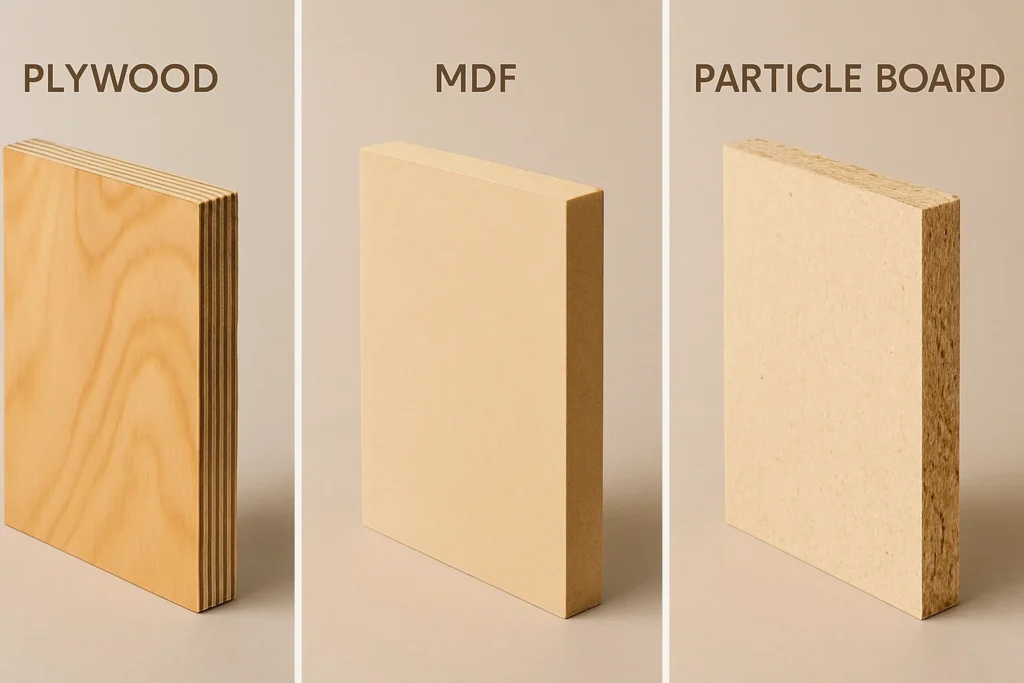
The short list you will see in real projects
- Plywood: Strong, stable, good for boxes and shelves. See the basics of plywood if you want the core idea.
- MDF: Smooth, dense, paint-friendly. Learn what medium-density fibreboard (MDF) is and why it paints so well.
- Particle board: Lowest cost; needs good edge sealing and hardware strategy.
- Melamine / TFL and HPL laminates: Hard-wearing faces for carcasses and doors; color and texture control. A note on chemistry: common resins include melamine resin for TFL.
- Solid wood / Veneer: Warm look; best on doors and face parts, while boxes stay engineered for stability.
- Metal / Stainless: Niche, high-durability, easy clean, colder look; often for pro or coastal use.
Quick pairing guide
| Part of cabinet | Best-fit materials | Why |
| Box sides / shelves | Plywood, melamine-faced particle board (budget) | Strength, screw holding, flatness |
| Backs | 1/4″–1/2″ plywood, hardboard (budget) | Racking resistance, weight control |
| Doors (paint) | MDF | Smooth edges, crisp profiles |
| Doors (stain) | Solid wood, veneer on stable core | Grain match, look |
| Drawer boxes | 1/2″–5/8″ plywood, solid wood | Strength, slides hold |
| Drawer bottoms | 1/4″ plywood, hardboard | Light, stable |
| High-moisture zones | Plywood, sealed melamine | Better moisture tolerance |
Plywood vs MDF: which is better for boxes?
Both work. Plywood is stronger and better with screws. MDF is cheaper and paints well. For boxes in busy kitchens, plywood often wins; MDF suits painted doors and trim.
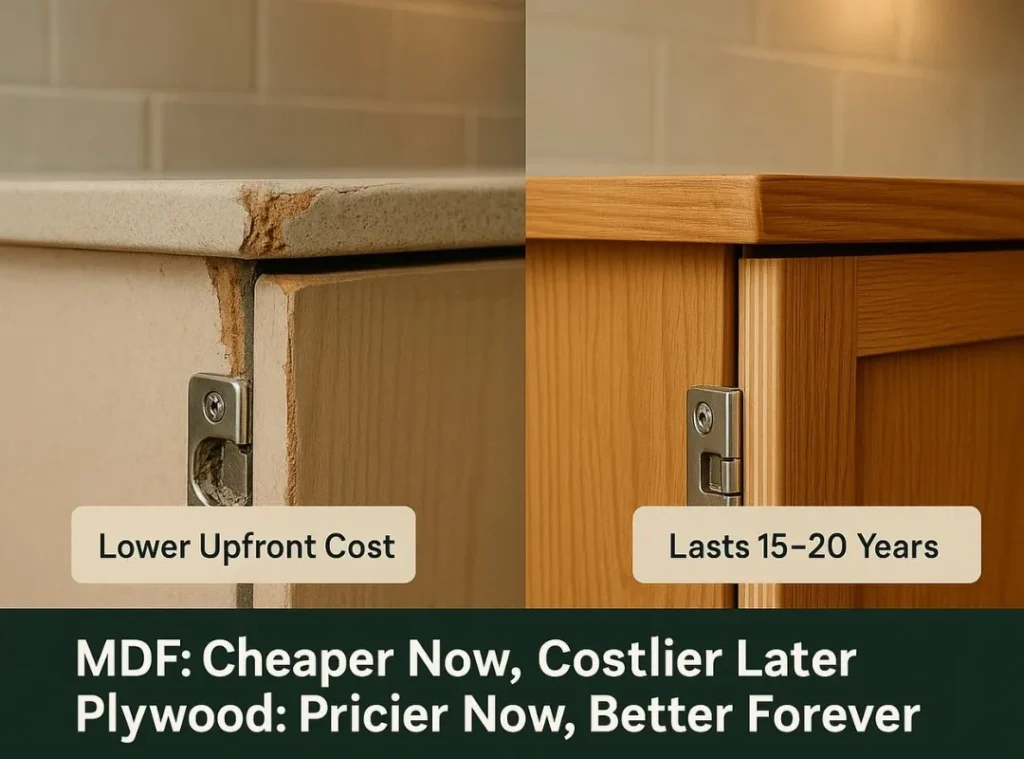
How to decide without guessing
Think use, finish, and budget.
- Use: Heavy drawers, long shelves, or humid zones push you to plywood. It resists sag and holds fasteners.
- Finish: For a flawless paint on doors or end panels, MDF gives smooth edges. It profiles and sands clean.
- Budget: MDF and melamine-faced particle board help when costs are tight. Spend saved dollars on better hinges and slides.
Box build rules of thumb
- Plywood boxes handle repeated loading better. Screws bite in the plies. Confirm shelf span and thickness early.
- MDF boxes can work in dry spaces with clever hardware: wider screws, confirmat screws, or mechanical fasteners designed for composites.
- For a hybrid, use plywood boxes and MDF doors. You get strength where it matters and paint quality up front.
Maintenance: MDF edges need sealing. Plywood edges want a clean tape or solid lipping. Both like a square, plumb install.
Is particle board okay for kitchens?
It can be. It is affordable and flat. But it needs smart detailing. Use edge sealing, proper fasteners, and avoid long, unsupported spans in humid zones.
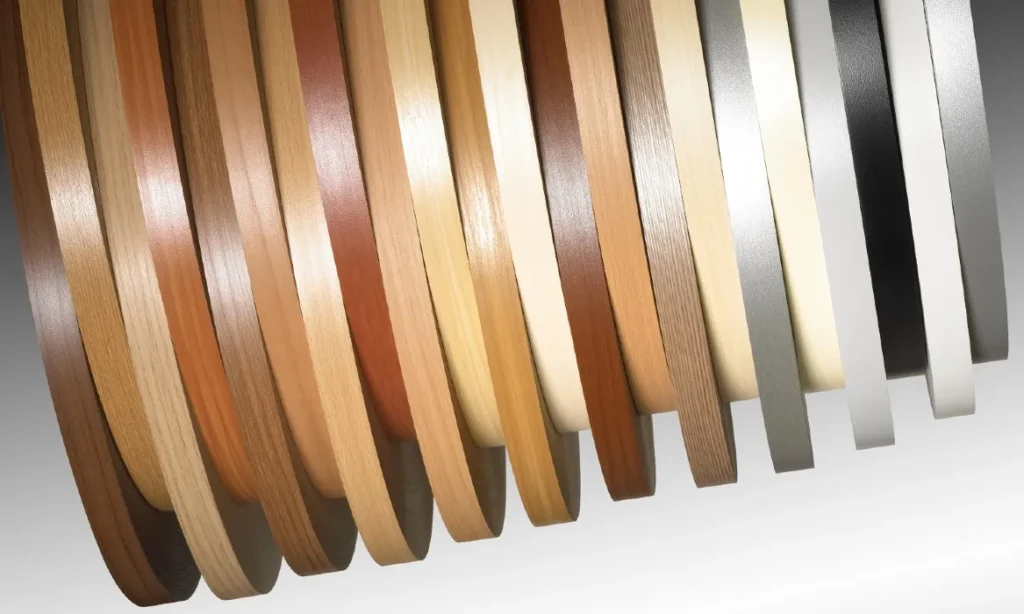
When it works—and when it does not
Works when the kitchen is dry, spans are short, and you specify melamine/TFL faces with edge banding on all raw edges. Use confirmat screws or system hardware and support shelves with center dividers if spans run long.
Struggles near sinks, dishwashers, and mops. Edges can wick moisture and swell. Bottom shelves that see spills will show damage first. Toe-kicks take hits and need a moisture-proof base or plastic leveling feet.
Practical setup
- Choose high-density panels from a known mill. Ask for moisture-resistant grade if available.
- Band every edge. Seal cutouts and holes.
- Use confirmat screws or cams engineered for composites.
- Add backs that tie the box square; do not rely on thin hardboard alone for wide bases.
- Keep clear silicone at sink cabinets and floor transitions.
- Plan replaceable shelves under the sink.
Bottom line: particle board can serve in value builds, rentals, and guest suites. For a forever kitchen, plywood boxes are a safer bet.
Thermofoil vs laminate: what’s the difference?
Thermofoil is a PVC or vinyl film vacuum-pressed over a door. Laminate is paper or fabric layers with resin under heat and pressure. Laminate usually handles heat better.
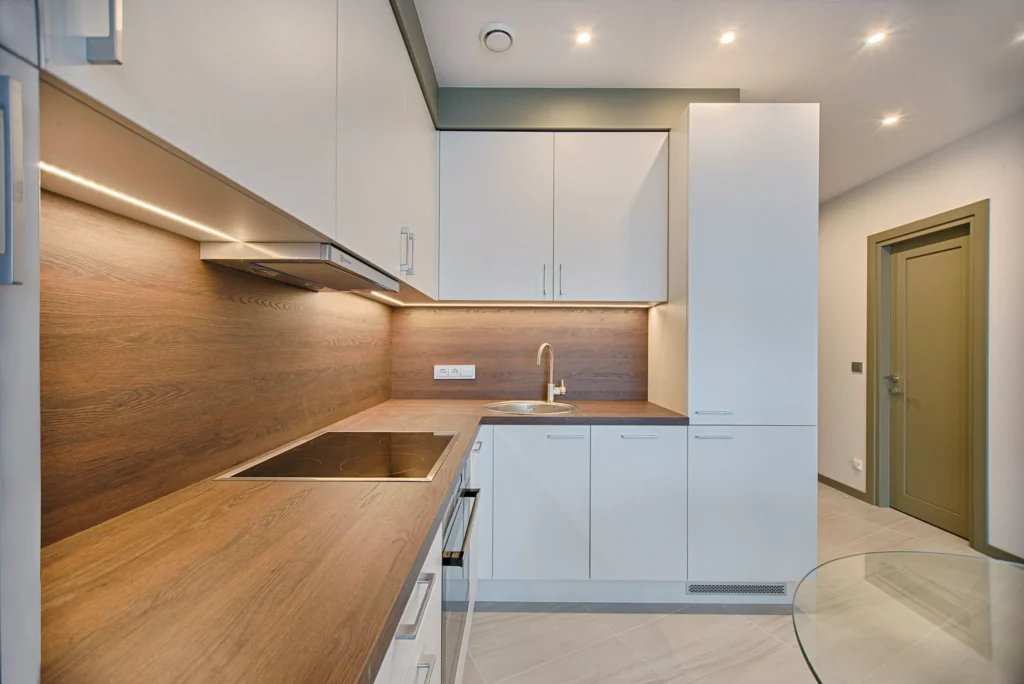
Pick by heat, edge, and repair
Heat: Thermofoil can soften near ovens or kettles if heat shields are missing. HPL keeps shape better.
Edges: Thermofoil wraps reduce visible seams. HPL often shows a tiny edge or needs seamless laser edging for a premium look.
Repair: Small chips on HPL can be filled or replaced. Thermofoil delamination is harder to fix and may mean a new door.
Where each shines
- Thermofoil for uniform whites and simple profiles. It is easy to wipe and cost-friendly. Add metal heat shields by appliances.
- HPL for bold textures, matte anti-fingerprint finishes, or high-abuse spaces. HPL works on flat slab doors, end panels, and work surfaces.
- TFL (melamine) for carcasses: durable faces in wood looks and solids; great value for the inside.
Tip: Mix them. Use HPL or painted MDF for doors near heat, and TFL for boxes. Keep color and texture aligned so the kitchen reads as one design.
Are melamine cabinets moisture resistant?
Melamine faces resist stains and light moisture well. The weakness is not the face; it is the core and the edges. Seal edges and choose moisture-resistant cores for wet zones.
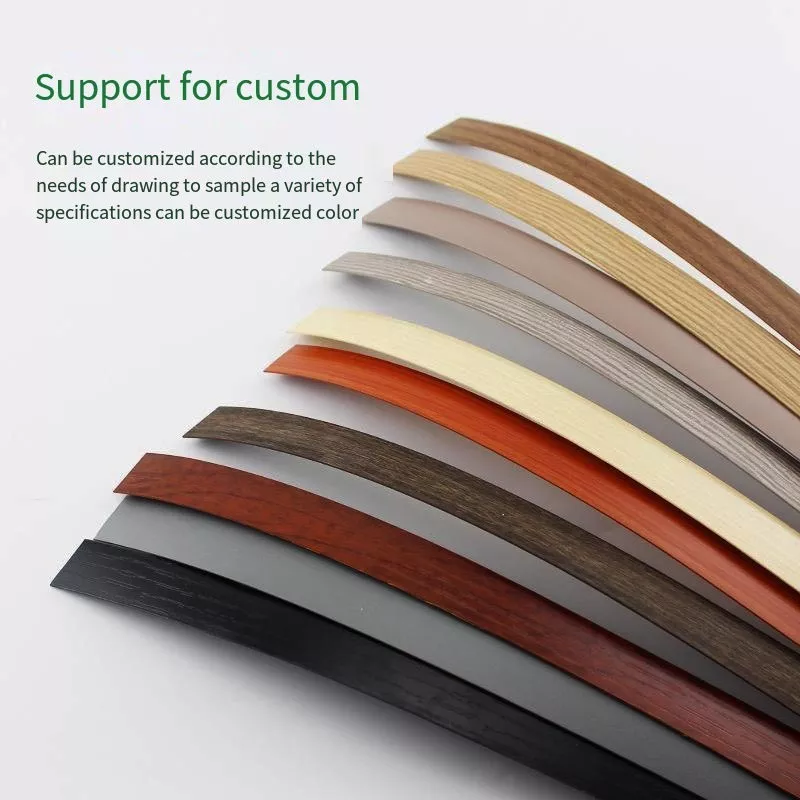
How to make melamine last
Choose the right core: melamine is a surface, not the board itself. Ask for MR particle board or plywood core when you expect spills and steam.
Protect the edges: band every edge with quality PVC or ABS. Seal cutouts. Keep silicone at sink bases.
Hardware matters: use hinges and slides with strong mounting plates and system screws. Avoid overtightening, which can strip composite cores.
Simple inspection checklist
- Are all raw edges banded?
- Is the sink cabinet lined or raised off the floor?
- Is there a heat shield near ovens?
- Are shelves thick enough for dish loads?
- Does the supplier specify the board density and resin class?
Result: melamine can look new for years if you protect the weak spots. It is a smart choice for rental units, pantries, and clean, modern interiors.
What thickness plywood should I choose?
Most boxes use 3/4″ (19 mm) for sides and shelves, 1/2″ for drawer boxes, and 1/4″ for backs with rails. Adjust by shelf span, load, and hardware.
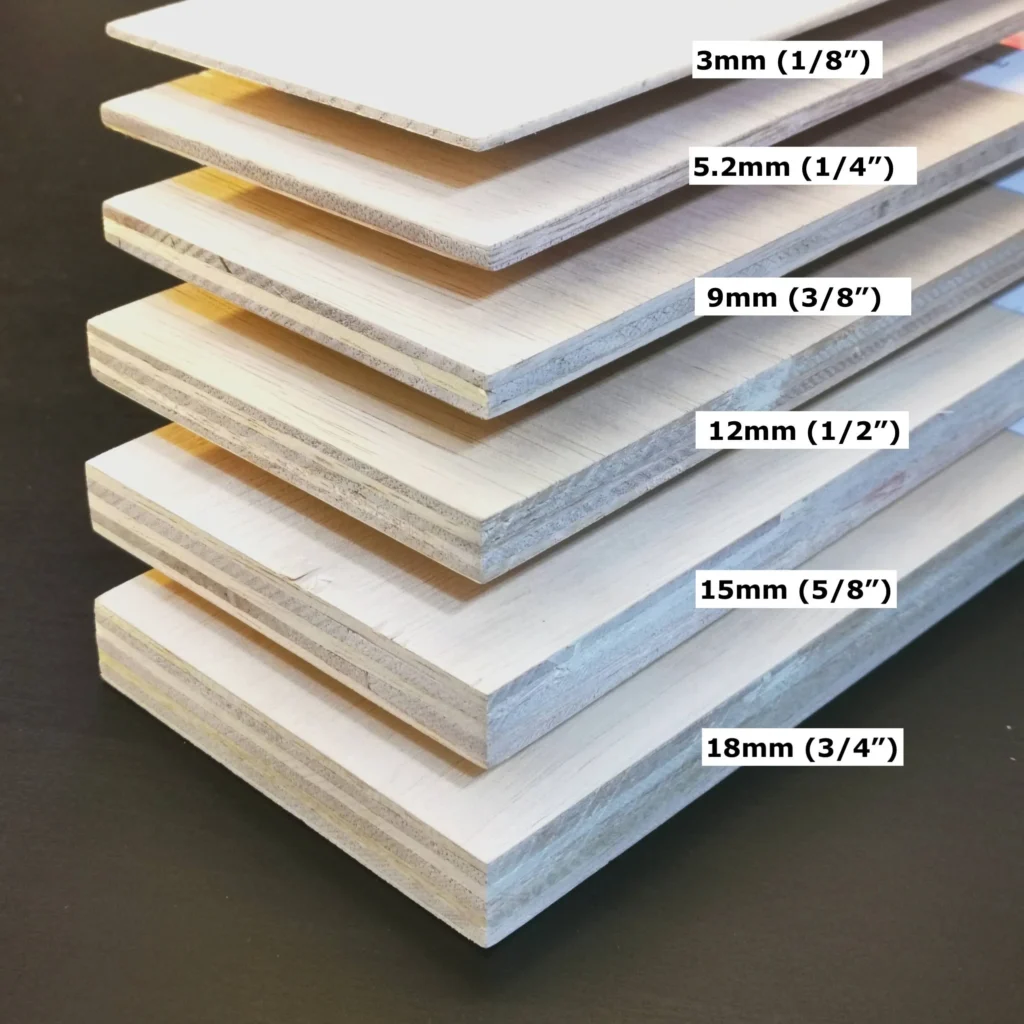
Thickness by part and span
| Part | Typical thickness | Notes |
| Box sides | 3/4″ (19 mm) | Strong screws; good for frameless |
| Shelves ≤ 30″ span | 3/4″ | Add edge banding for stiffness |
| Shelves > 30″ span | 1″ or 3/4″ + front rail | Reduce sag under dishes |
| Drawer boxes | 1/2″–5/8″ | Balance weight and capacity |
| Backs (frameless) | 1/4″ + stretchers | Tie the box square |
| End panels | 3/4″ | Protect corners; clean edge |
Why it works
3/4″ hits the sweet spot for strength, fastener bite, and shelf stiffness in most kitchens. Go thicker or add a front rail for wide spans. Drawer boxes in 1/2″–5/8″ keep weight down so slides run smooth at full extension. Backs stiffen the box; thin backs need rails or a full dado to resist racking.
Do a simple test: place a shelf on supports, load with plates, and check deflection after a day. If it sags, add a front rail or upgrade to thicker stock.
Which materials handle humidity and heat best?
For splash and steam, plywood boxes and HPL/TFL faces do well. In heat zones, HPL or painted MDF beats thermofoil. For coastal or heavy-duty use, consider stainless or aluminum frames.
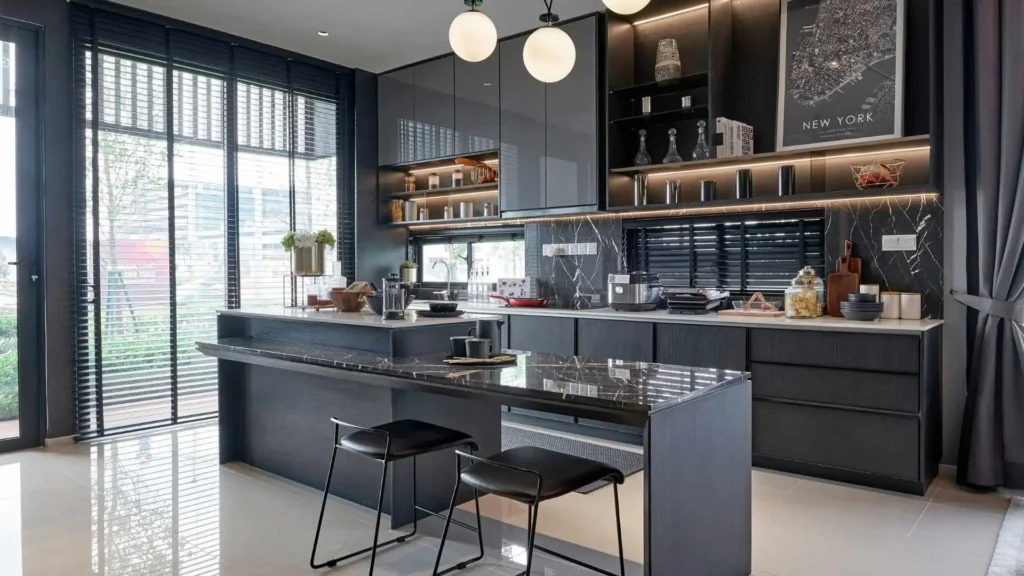
Zone-based planning
- Sink and dishwasher: choose plywood or MR-core melamine for boxes; band edges; line the floor; seal penetrations.
- Oven and cooktop: keep heat shields; avoid thermofoil doors beside ovens; favor HPL or painted MDF.
- Tall pantries: check shelf spans; heavy dry goods need thicker shelves or center dividers.
- Island backs: panels see kicks and bags; thicker end panels or real wood edges help.
Small details, big life
Use adjustable feet to keep boxes off wet floors. Vent dishwashers to the front, not the cabinet side. Plan drip trays under sinks. Add bumpers to doors to avoid edge chipping. Choose soft-close hardware sized for real loads.
Outcome: if you match material to zone, your cabinets stay straight, doors shut true, and surfaces clean with simple care.
Which door material should I choose for paint or stain?
Paint loves MDF for its smooth edges and flat faces. Stain loves solid wood or veneer over a stable core. Choose by the final look and how you clean.
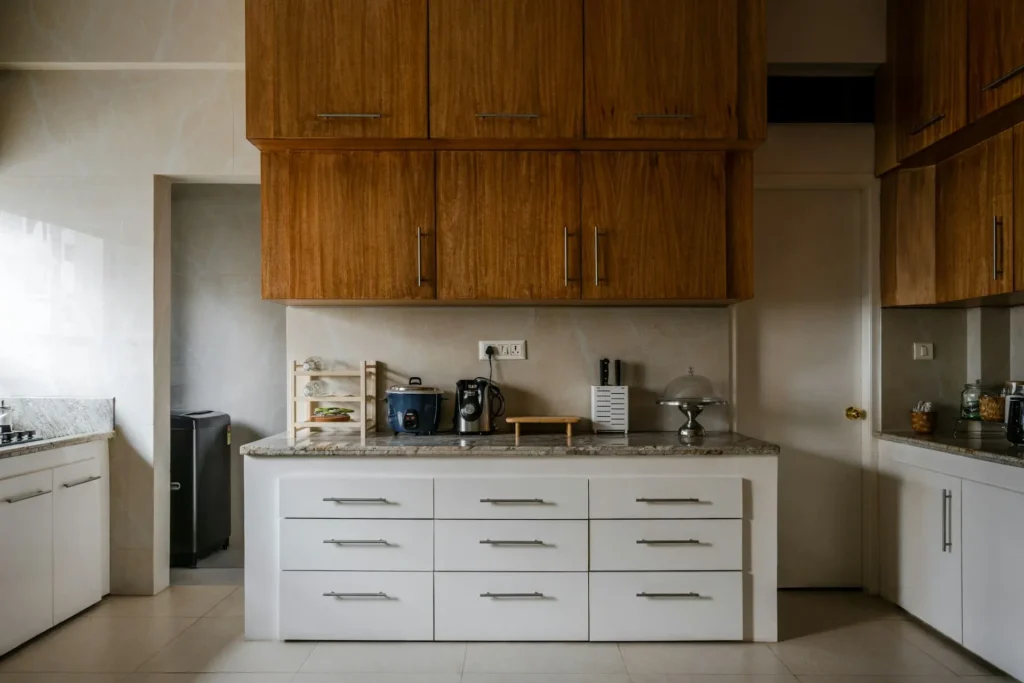
A quick chooser
- Painted Shaker or slab: MDF doors for smooth edges; use plywood boxes behind them.
- Stained wood look: veneer on stable cores for flat doors; solid wood frames for classic styles.
- High-touch homes: consider HPL super-mattes for smudge-resistance and easy wipe-downs.
Care and repair
Painted MDF can be touched up with filler and paint. Veneer repairs need color-matched putty and a careful hand. HPL resists day-to-day knocks but shows deeper chips. Pick what you are happy to maintain.
Conclusion
Match material to use, climate, and finish. Spend on boxes and hardware first. Then pick faces you love and can keep clean.
Final CTA
If you have a plan or a vision board, we can turn that into a full material schedule, a simple 3D, and a clear quote. Send a floor plan, tell us style, and note any must-have colors or textures. We will suggest the right core, finish, hardware, and edge strategy for each zone, then map shipping and after-care in one thread. Ready to start? Send us your floor plan and we will take it from there.
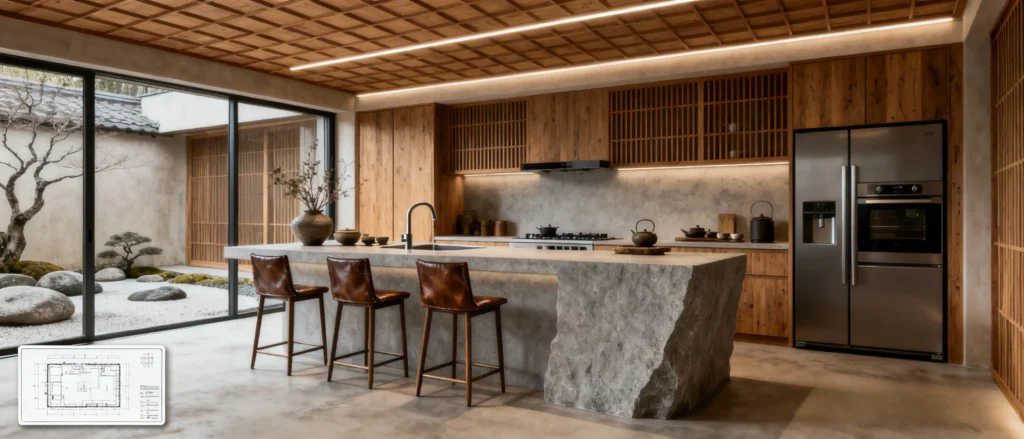
FAQ
Which is better, plywood or MDF?
Plywood is stronger and holds screws better, so it suits cabinet boxes and shelves. MDF is smoother and cheaper, great for paint-grade doors and trim.
Are melamine cabinets a good choice for kitchens?
Yes. Melamine/TFL faces resist stains and light moisture. Protect edges and choose a moisture-resistant core for sink bases and other wet zones.
What thickness plywood should I use for cabinet boxes?
Use 3/4″ for sides and shelves, 1/2″ for drawer boxes, and 1/4″ for backs with rails. Increase thickness or add a front rail for long spans.
Is particle board okay for kitchen cabinets?
It works in dry spaces with full edge banding and the right hardware. In humid zones, plywood boxes typically last longer and handle fasteners better.
Thermofoil vs laminate: what’s the difference?
Thermofoil is a vacuum-pressed vinyl wrap that can soften near heat. Laminate (HPL) uses resin-bonded layers and usually handles heat and wear better.
Is MDF or solid wood better for cabinet doors?
For paint, MDF gives crisp edges and a smooth face. For stain, solid wood or wood veneer looks richer but moves with humidity and needs careful finishing.
What are the most durable kitchen cabinet materials?
Cabinet-grade plywood with HPL or high-quality TFL faces is a strong, long-wearing combo. It balances structure, impact resistance, and easy cleaning for busy kitchens.
Are stainless steel kitchen cabinets practical?
They resist heat, water, and stains very well and clean fast. They cost more and feel colder, so many homes mix them with wood looks or use them for zones only.
